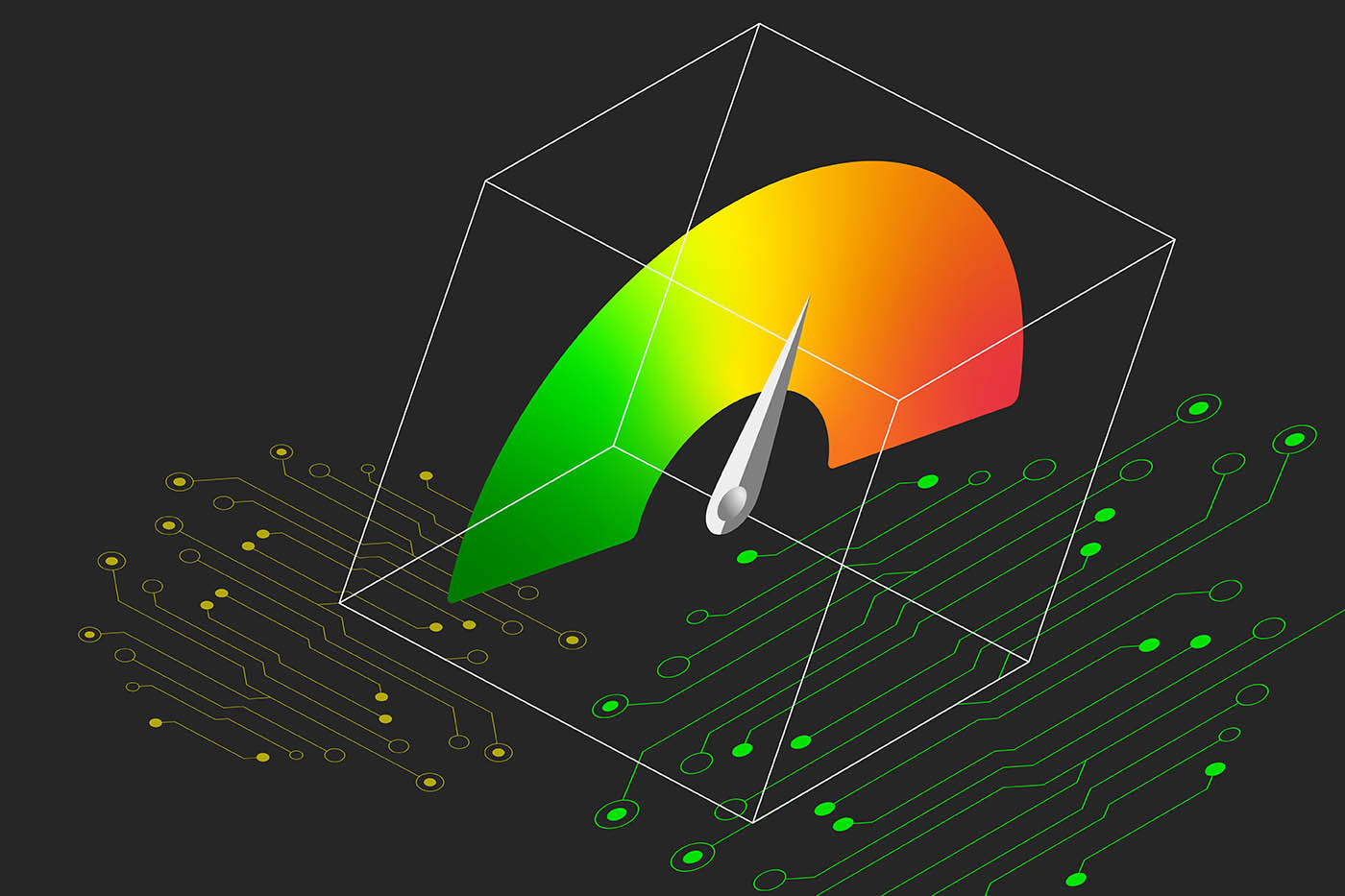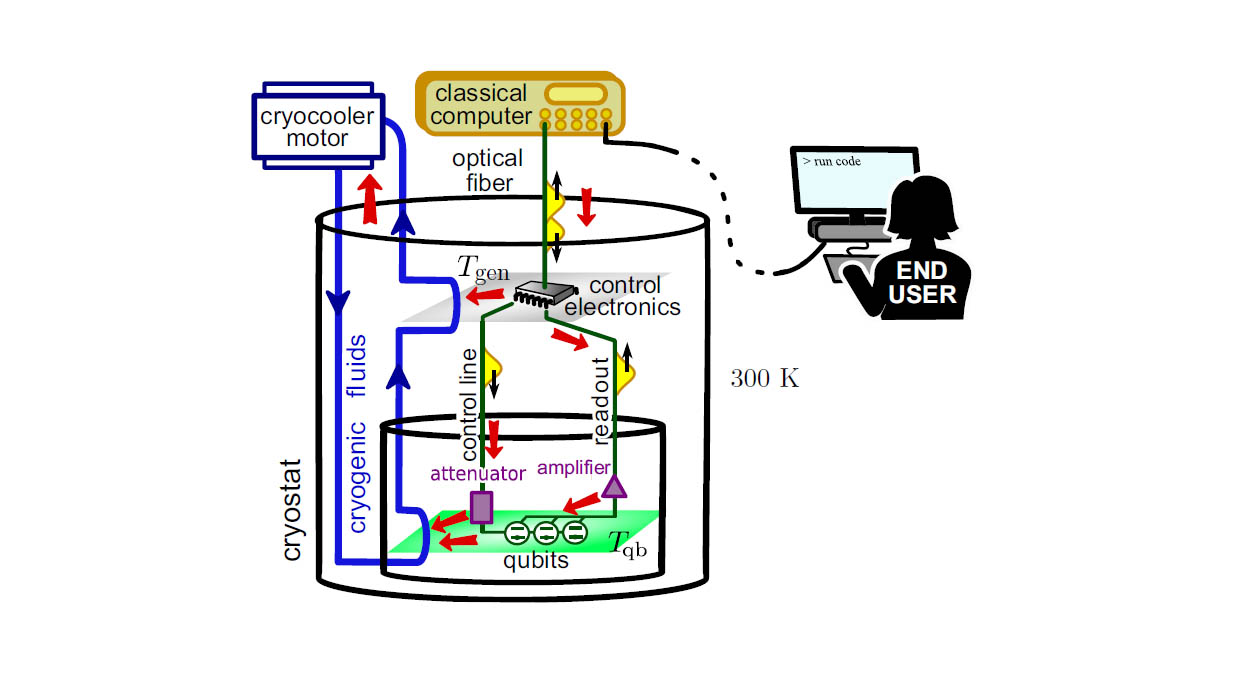Highlights
New methodology can guide design of energy-efficient quantum computers
 How much energy does a full-stack quantum computer consume? CQT and MajuLab researchers and their collaborators propose a standard for energetic efficiency for quantum technologies.
How much energy does a full-stack quantum computer consume? CQT and MajuLab researchers and their collaborators propose a standard for energetic efficiency for quantum technologies.
Researchers anticipate that ‘quantum advantage’ in quantum computing can come in different flavours. As well as boosts to computing power, there may be opportunity to reduce energy costs.
To study this possibility, researchers from CQT and the French National Centre for Scientific research (CNRS) have proposed a systematic methodology to tabulate the energy bill for quantum computers. Their paper was published in PRX Quantum on 30 October 2023.
Experiments have already shown that quantum computers can use less energy to perform calculations than conventional computers. The first demonstration of quantum advantage, reported by Google in 2019 on 50 superconducting qubits, came with news that the quantum experiment took five orders of magnitude less energy than the classical computation of the same task.
What the new work does is provide a framework to analyse the energetic efficiency of a full-stack quantum computer, allowing for the optimisation of design parameters.
Co-author Alexia Auffèves, a CQT Visiting Professor, says, “To me, it is the first interdisciplinary paper that tries to address the energetic problem systematically, connecting the macroscopic world with the microscopic and putting together these very different layers of description.”
Alexia is Director of MajuLab, a French-Singaporean International Research Laboratory. She collaborated on this paper with CQT Fellow Ng Hui Khoon, who is an Associate Professor in Yale-NUS College and also has an affiliation with the MajuLab, along with other researchers in France and Singapore.
Quantum energetic efficiency
It’s a big challenge to model a full-stack quantum computer from the quantum hardware and software, such as qubit connectivity and error correction, to the enabling technologies, such as cryogenic systems. Most of the work so far to estimate resource cost has concentrated on the quantum level, or was focused on algorithmic costs.
The team’s methodology considers the resource costs from the full stack, paying particular attention to the impacts of noise on the macroscopic resource consumption of enabling technologies like cryogenics and electronics.
Quantum computing involves a fight against noise in qubits and gate operations which pollutes the calculation of tasks. To achieve a particular level of performance, researchers need to control noise using other resources that could in turn introduce more noise to the system. For example, more error correction requires more physical qubits, which need more control electronics, which results in additional heat.
 Minimising the resource costs to achieving a target performance in quantum computing needs you to analyse all levels of a quantum computer’s operation, from a single qubit to a cryostat. Image credit: PRX Quantum 4, 040319 (2023).
Minimising the resource costs to achieving a target performance in quantum computing needs you to analyse all levels of a quantum computer’s operation, from a single qubit to a cryostat. Image credit: PRX Quantum 4, 040319 (2023).
The researchers devise a ‘metric noise resource’, or MNR, methodology that models this fight. They can then analyse energetic efficiency as a ratio between a chosen computing performance metric and the resource cost.
Researchers have flexibility in how they define these two quantities. The performance metric could be defined at the level of the quantum processor, such as the fidelity of quantum states being prepared, or closer to the end-user, such as the size of a cryptographic key being broken. Similarly, researchers may be interested in different resource costs – for example, it could be defined as the physical volume occupied by the quantum processor, the duration of an algorithm or the electrical power consumed while a quantum computation is being performed.
The methodology is universal, applicable to different qubit platforms and error correction codes. “The important thing is that if we use energetic efficiency as a figure of merit in comparing across different hardware or tasks, we must use consistent definitions,” says Alexia.
Key concepts
As a proof of concept, the researchers apply their MNR methodology to an idealised full-stack quantum computer based on superconducting qubits protected by a concatenated seven-qubit error correction code. The computation task for their model is the breaking of Rivest-Shamir-Adleman (RSA) using Shor’s algorithm. RSA is a public-key cryptosystem that is still widely used today to secure data transmission.
They defined their performance metric as the size of the key that can be broken with a success probability of 2/3 and their resource cost as the electrical power consumed. Based on their calculations, the team estimate that for an 830-bit RSA key, the quantum computer would consume 2.7 GJ of energy, giving an efficiency of 3 × 10-7 bit/J. In contrast, they estimate a classical supercomputer to have an efficiency of 8 × 10-10 bit/J for the same task. The two orders of magnitude difference points to a quantum energy advantage.
Remarkably, the energy advantage is reached under different conditions than the computational advantage: in some conditions, the quantum computer could compute slower than the classical one, but with less energy. Optimisations could be chosen accordingly.
“Our calculations were done based on an idealised model and the figures should be revisited with more realistic approaches,” says Alexia. “But it is a starting point.”
The method also spotlights some surprises. While it is often optimal to make qubits colder to minimise error correction, the team’s approach finds some regimes where the opposite is true. In these cases, it is more energy e??cient to have warmer qubits with more error correction.
From such analyses, experimentalists may derive guidelines for building energy-efficient quantum computers. The potential energy savings of quantum computing is an emerging field of research. In June 2021, Alexia published another paper in PRX Quantum titled “Quantum Technologies Need a Quantum Energy Initiative”. Since then, she has been involved in launching the Quantum Energy Initiative (QEI) website and manifesto, aiming to foster a worldwide community of experts working on the physical resource costs of emerging quantum technology.
The initiative now has over 370 participants and held its inaugural workshop in Singapore from 20 to 24 November.






